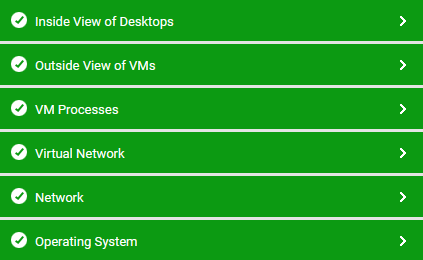The RHEV Hypervisor - VDI Monitoring Model
In some environments, the virtual guests hosted on RHEV servers may be used to support desktop applications. Administrators of such virtual environments would want to know the following:
-
How many desktops are powered on simultaneously on the RHEV server?
-
Which users are logged on and when did each user login?
-
How much CPU, memory, disk and network resources is each desktop taking?
-
What applications are running on each desktop?
-
Which RHEV server is a virtual guest running on?
-
When was a guest moved from an RHEV server? Which RHEV server was the guest moved to?
-
Why was the guest migrated? What activities on the RHEV server caused the migration?
Using the RHEV Hypervisor - VDI model (see Figure 1), administrators can find quick and accurate answers to all the queries above, and also receive a complete 'desktop view', which allows them to get up, close with the performance of every guest OS hosted by the RHEV server and detect anomalies (if any) in its functioning.

Figure 1 : The RHEV Hypervisor - VDI Monitoring Model
The tests mapped to the bottom five layers of the layer model have been discussed in the Monitoring the RHEV Hypervisor chapter. The Inside View of Desktops layer runs the same tests as the Inside View of VMs layer of the RHEV Hypervisor model. However, the difference lies in what these 'inside view' tests monitor; in the case of the VDI environment these tests report metrics for the user currently logged into the VM - not the VM itself as in the case of the RHEV Hypervisor model.
